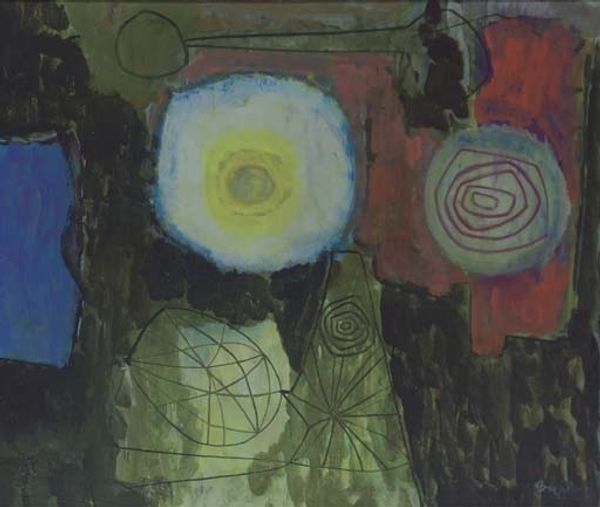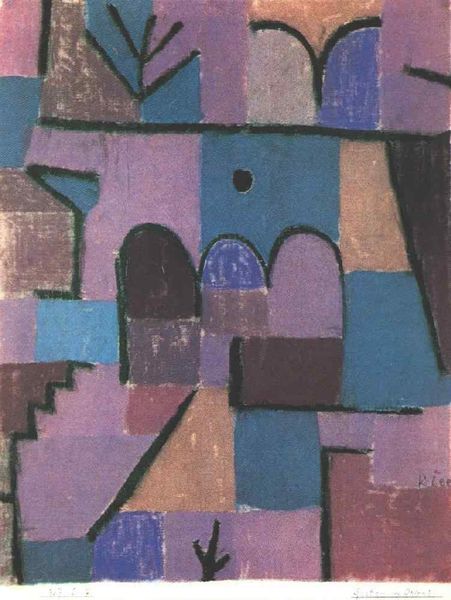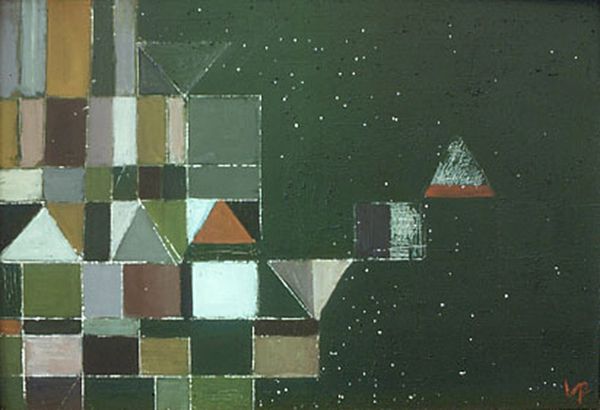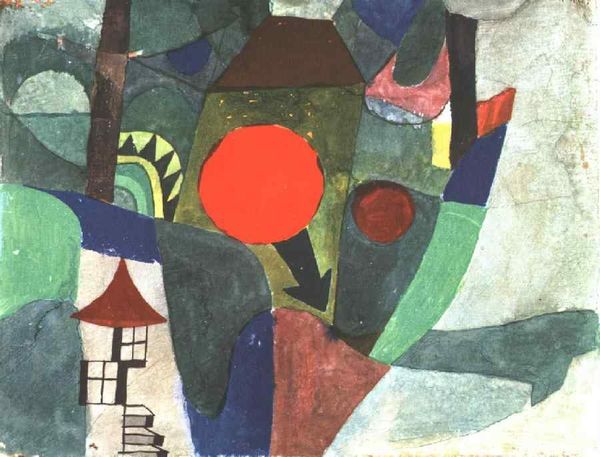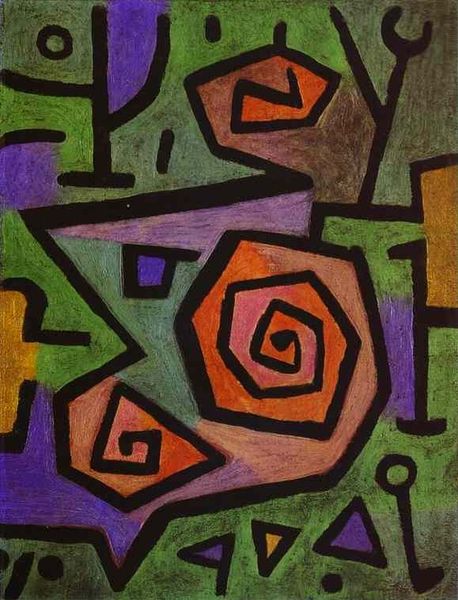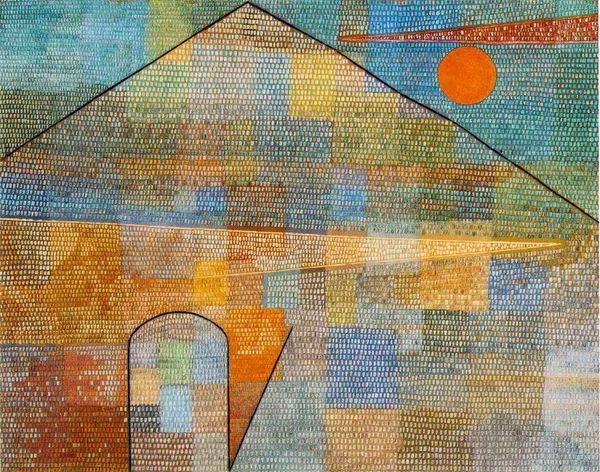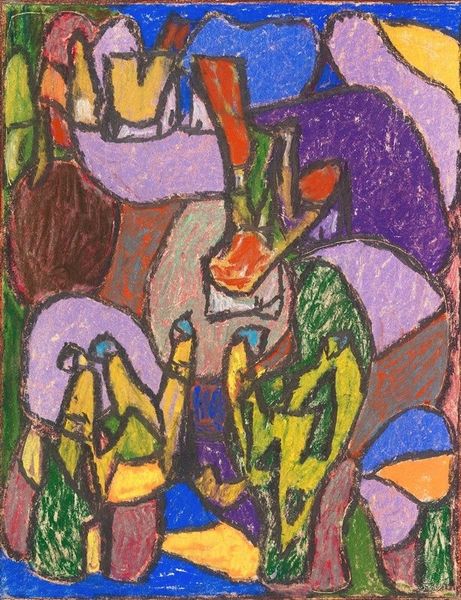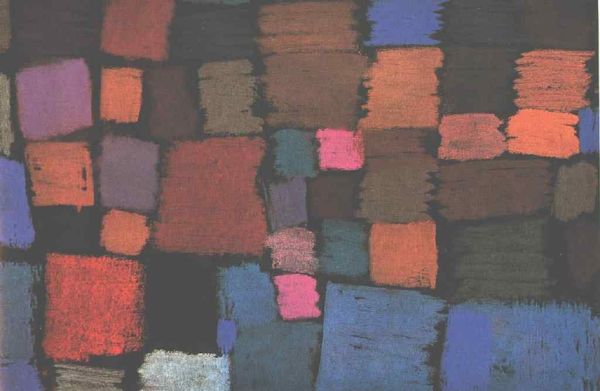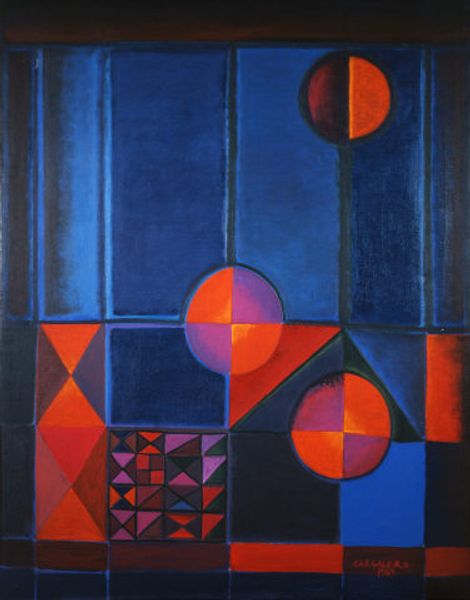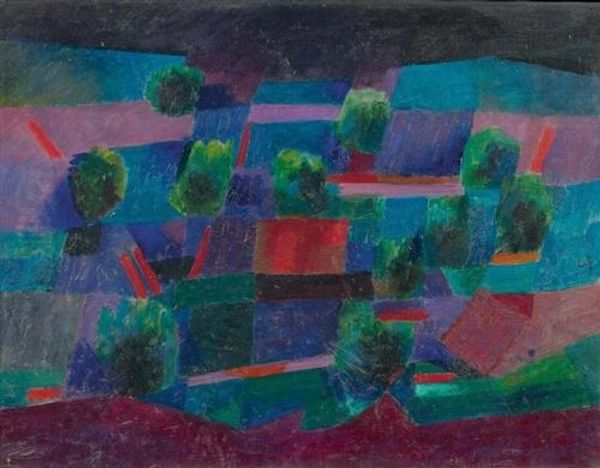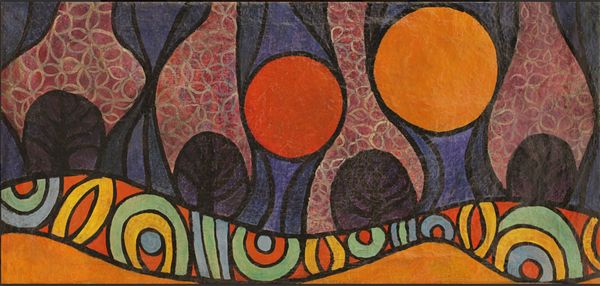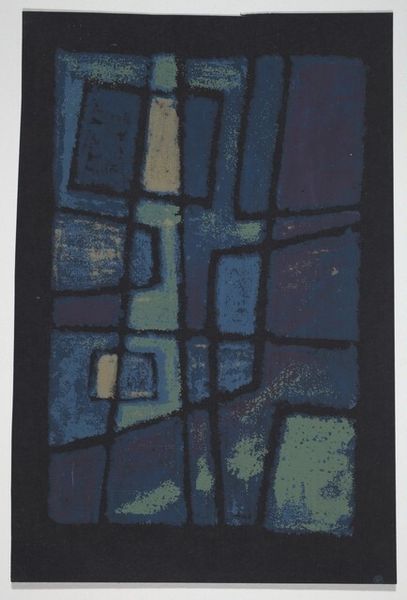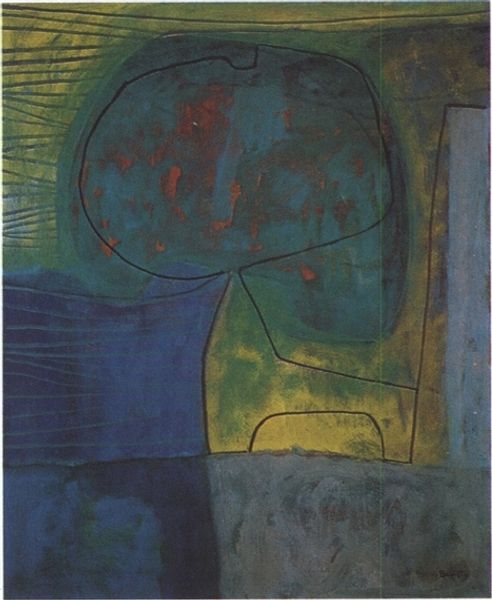
Copyright: Public domain
Editor: Here we have Paul Klee's "Small room in Venice" from 1933, created using tempera on canvas. I find the grid structure combined with those vibrant violet and rose colors really captivating. What's your take on this piece? How do you interpret this work, especially considering its historical context? Curator: It's fascinating, isn't it? I see this work through the lens of the rise of fascism and Klee's own personal turmoil during that period. Venice, typically associated with beauty and romance, is rendered here as a series of constrained, almost suffocating geometric forms. Those "windows," if that’s what they are, are small and limiting. The colours, though bright, are muted, giving a sense of unease, of something beautiful struggling under oppression. Does that resonate with you at all? Editor: That's a powerful reading. The compression you're describing makes me think of surveillance, of being watched. The shapes almost resemble abstracted buildings or perhaps even cages. I hadn’t considered the societal implications so directly, but it definitely adds a chilling layer. Curator: Precisely! Consider how Klee himself was dismissed from his teaching post under Nazi pressure that same year. This painting could be seen as a direct commentary on the increasingly confined artistic and personal freedoms he was experiencing. How do you think the tempera medium contributes to this mood? Editor: I think it adds to that feeling of constraint because it is less luminous than oils. The hazy effect almost dulls those bright colours, like they're trying to shine through but can't fully escape, creating a quiet yet defiant resistance. Curator: Exactly. It’s that subtle resistance, that coded message within the aesthetic beauty, that makes Klee's work so incredibly potent. It makes us ponder on how artistic expression and individual agency are interwoven with political realities. Editor: This conversation has drastically altered how I view the piece. I initially saw it as beautiful shapes and color combinations, but now I'm struck by its commentary on political constraint and its quiet call to challenge that very condition. Curator: Indeed. Art often serves as a mirror reflecting society's challenges and offers pathways to understand the collective consciousness.
Comments
No comments
Be the first to comment and join the conversation on the ultimate creative platform.
